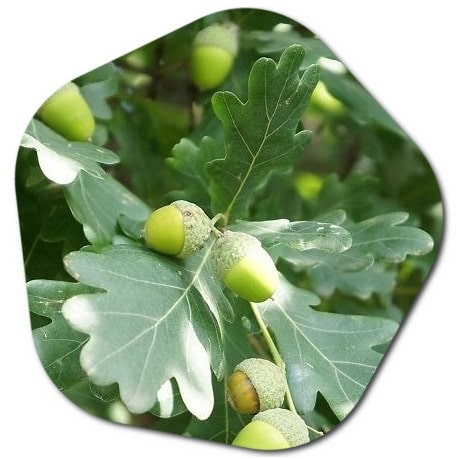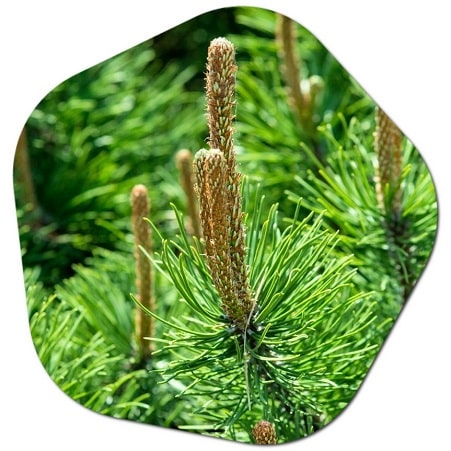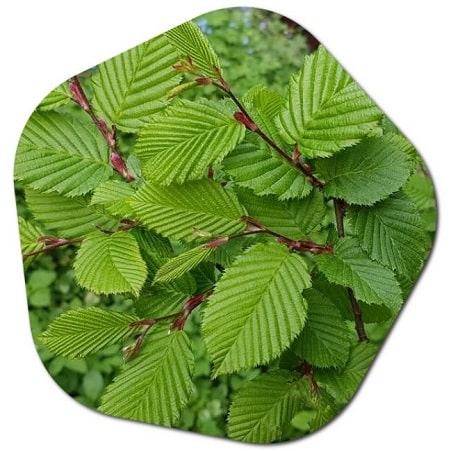Approximately 13% of the land area in the United Kingdom is covered by forests. The total forest area in the UK is estimated to be around 3.19 million hectares (7.88 million acres). The country has a mix of natural and planted forests, including both coniferous and broadleaf trees. Forests in the UK play an essential role in supporting biodiversity, providing recreational opportunities, and contributing to carbon sequestration and climate regulation. However, please note that specific figures and data may have changed since my last update, so it’s recommended to refer to the latest reports or official sources for the most accurate and up-to-date information on forest cover in the UK.
What are the most popular trees growing in UK forests?
The UK has a diverse range of tree species that can be found in its forests. Some of the most popular trees growing in UK forests include:

- Oak (Quercus spp.): Oak trees are native to the UK and are highly valued for their strength and longevity. They support a wide variety of wildlife and are culturally significant in the country.
- Scots Pine (Pinus sylvestris): Scots Pine is a native coniferous tree that is widely distributed in the UK. It is known for its tall, straight trunks and distinctive orange-brown bark.
- Beech (Fagus sylvatica): Beech trees are native to the UK and are prized for their smooth, silvery-gray bark and vibrant green leaves. They form dense, shady canopies and are common in many woodland areas.
- Silver Birch (Betula pendula): Silver Birch is a deciduous tree with distinctive white bark and delicate, pendulous branches. It is native to the UK and is often found in open woodlands and heathland areas.
- Ash (Fraxinus excelsior): Ash trees are native to the UK and are known for their tall, slender trunks and pinnate leaves. However, they have been significantly affected by the spread of ash dieback disease in recent years.
- Sycamore (Acer pseudoplatanus): Sycamore is a non-native tree species that has become naturalized in the UK. It has large, lobed leaves and produces winged seeds called “helicopters.”
- European Beech (Fagus sylvatica): European Beech is a common tree species in the UK, particularly in the south. It has smooth gray bark, oval-shaped leaves, and produces beechnuts.
- Scots Elm (Ulmus glabra): Scots Elm is a native tree that was once widespread in the UK but has been significantly affected by Dutch Elm Disease. However, efforts are being made to reintroduce disease-resistant elm varieties.
These are just a few examples of popular trees found in UK forests. The specific tree species can vary depending on the region, climate, and soil conditions.

Names of forests in England
England is home to numerous forests, both natural and planted, that offer beautiful landscapes, recreational opportunities, and diverse wildlife. Here are some notable forests in England:
- New Forest: Located in Hampshire, the New Forest is one of the largest remaining tracts of unenclosed pastureland, heathland, and forest in southern England. It is a national park and a Site of Special Scientific Interest (SSSI).
- Sherwood Forest: Famous for its association with the legendary figure Robin Hood, Sherwood Forest is located in Nottinghamshire. It is now a country park and nature reserve, attracting visitors with its ancient oak trees, walking trails, and historical landmarks.
- Forest of Dean: Situated in Gloucestershire, the Forest of Dean is a large woodland area known for its scenic beauty, diverse wildlife, and outdoor recreational activities. It is a popular destination for hiking, cycling, and nature exploration.
- Epping Forest: Located near London, Epping Forest is one of the largest public open spaces in the London area. It is a registered charity and a designated Site of Special Scientific Interest, providing a natural retreat for residents and visitors.
- North York Moors: While not strictly a forest, the North York Moors National Park in North Yorkshire contains extensive woodland areas. It encompasses heather moorland, rolling hills, and ancient forests, offering picturesque landscapes and opportunities for outdoor pursuits.
- Cannock Chase: Located in Staffordshire, Cannock Chase is an Area of Outstanding Natural Beauty (AONB) and a Site of Special Scientific Interest. It features a mix of woodland, heathland, and parkland, and is known for its rich biodiversity.
- Whinlatter Forest Park: Situated in the Lake District National Park in Cumbria, Whinlatter Forest Park is England’s only mountain forest. It offers stunning views, walking trails, cycling routes, and a visitor center with educational exhibits.
These are just a few examples of the many forests and woodland areas in England, each with its own unique features and attractions.
What are the benefits of forests in the UK?
Forests in the UK provide numerous benefits to both the environment and society. Here are some key benefits of forests in the UK:
Biodiversity Conservation: Forests support a wide range of plant and animal species, providing habitats for various wildlife. They play a crucial role in conserving biodiversity by providing food, shelter, and breeding grounds for diverse species, including rare and endangered ones.

Carbon Sequestration and Climate Regulation: Forests act as carbon sinks, absorbing carbon dioxide from the atmosphere and storing it in trees and soil. This helps mitigate climate change by reducing greenhouse gas emissions and regulating the carbon cycle.
Air Quality Improvement: Forests help improve air quality by absorbing pollutants such as carbon dioxide, ozone, and particulate matter. They release oxygen through photosynthesis, enhancing the overall air quality in the surrounding areas.
Water Regulation: Forests play a crucial role in regulating water cycles. They help prevent soil erosion, promote water infiltration, and regulate water flow, which can reduce the risk of flooding and maintain water quality in rivers and streams.
Recreation and Tourism: Forests provide opportunities for outdoor recreation and nature-based tourism. People can engage in activities like hiking, cycling, birdwatching, and picnicking, which contribute to physical and mental well-being while supporting local economies.
Timber and Forest Products: Forests in the UK provide a sustainable source of timber and other forest products. Responsible forest management ensures a continuous supply of wood for various purposes, including construction, furniture, paper, and renewable energy.
Cultural and Historical Significance: Many forests in the UK hold cultural and historical significance, showcasing traditional land uses, folklore, and ancient heritage. They provide a sense of connection to the past and cultural identity.
Aesthetics and Green Spaces: Forests contribute to the visual appeal of landscapes, offering serene and picturesque settings. They provide green spaces for relaxation, leisure, and recreation, improving the overall quality of life for nearby communities. How many forests are in the UK? >>
It’s important to note that these benefits can vary depending on the specific forest ecosystem, management practices, and regional factors. The sustainable management and conservation of forests in the UK are essential to continue enjoying these valuable benefits for future generations.
Why is UK forest cover so low?
The relatively low forest cover in the UK can be attributed to a combination of historical, geographical, and land-use factors. Here are some key reasons why UK forest cover is relatively low:
- Historical Land Use: Over centuries, the UK has undergone extensive land use changes, including deforestation for agriculture, timber production, and urban development. Large-scale clearing of forests for farming and industrial purposes reduced the forest cover significantly in the past.
- Industrialization and Urbanization: The UK’s industrial revolution in the 18th and 19th centuries led to rapid urbanization and increased demand for land for factories, infrastructure, and housing. This further reduced the available land for forests.
- Agricultural Practices: Agriculture has been a dominant land use in the UK, and agricultural practices have shaped the landscape. Large areas of land were converted for agricultural purposes, including pastureland and crop cultivation, which limited the extent of forests.
- Population Density: The UK has a relatively high population density compared to its land area. The demand for residential, commercial, and infrastructure development has resulted in limited available land for afforestation.
- Economic Factors: Historically, the economic importance of timber and forest products in the UK has been lower compared to other countries. This has influenced land-use decisions, with less emphasis on forest management and afforestation.
However, it’s important to note that in recent decades, there has been a growing recognition of the importance of forests for their environmental, social, and economic benefits. Efforts have been made to increase forest cover through afforestation, reforestation, and woodland creation programs. The UK government has set targets to expand woodland cover and improve forest management practices, aiming to enhance biodiversity, mitigate climate change, and provide multiple ecosystem services.
While the forest cover in the UK may be relatively low compared to some other countries, there is ongoing focus and investment in increasing forested areas and promoting sustainable land-use practices to ensure a healthier environment and a more balanced landscape. Short facts about the forests of the United Kingdom >>
